Textos en inglés al final del post / English translation at the end of this post.
Todos los aniversarios de Octubre aquí / All anniversaries for October here.
Todos los aniversarios de Octubre aquí / All anniversaries for October here.
_________________________________________________________
El 24 de Octubre es el cumple de
Rashid Talukder (রশীদ তালুকদার), destacado reportero gráfico del The Daily Ittefaq de Bangladesh nacido en Baj Baj, Pargana, India británica, en 1939.
Desarrolló su interés por la fotografía mientras aún estaba en la escuela, y cuando llegó al 8º curso, en 1945, comenzó a trabajar en el cuarto oscuro.
"Manifestantes queman un autobús del gobierno en Dacca / Protesters burned a government bus in Dhaka"
Rashid Talukder/Drik
Comenzó su carrera en 1962 como fotógrafo de prensa con los Sangbad en Dacca, Bangladesh. Después de trabajar aquí durante unos cuantos años, se unió al The Daily Ittefaq, donde trabajó durante 29 años como reportero gráfico. El trabajo más notable de su carrera fueron las fotografías tomadas durante la Guerra de Liberación de Bangladesh contra Pakistán en 1971, y la fotografía de Sheikh Mujibur Rahman ofreciendo su histórico discurso el 7 de marzo de 1971. Como temía por su seguridad, muchas de sus fotografías no se publicaron hasta 1993 cuando se acercó al diario The Daily Star. Pocos fotógrafos fueron capaces de filmar y publicar un relato de los acontecimientos. Fuera de Bangladesh, Horst Faas y Michel Laurent, de Associated Press ganaron un premio Pulitzer a la mejor fotografía de prensa en 1972, que aparecieron impresas como "Muerte en Dacca".
"Miembros de Kaderia Bahini, una guerrilla independentista, clavan una bayoneta a un colaborador del ejército pakistaní en Dacca, pocos días después de la Guerra de Liberación. Diciembre de 1971 /
Members of Kaderia Bahini, a guerrilla independence militia, bayoneted a collaborator of the Pakistan Army in Dhaka, a few days after the Liberation War. December 1971." Rashid Talukder/Drik
"Un chico encabeza una marcha durante el levantamiento de masas en 1969 en Dacca, Bangladesh (entonces Pakistán Oriental), uno de los eventos que precedió a la guerra de independencia de 1971. El chico fue asesinado poco después de que se tomara la imagen /
A boy led a procession during a mass uprising in 1969 in Dhaka, Bangladesh - then East Pakistan - one of the events that preceded the 1971 war of independence. The boy was killed shortly after the image was taken." Rashid Talukder/Drik
Fue el fundador de la Asociación de Periodistas Gráficos de Bangladesh, y también miembro de los consejos asesores de organizaciones fotográficas tales como la Sociedad Fotográfica de Bangladesh. En 2006 fue galardonado con el Premio a la Trayectoria por sus contribuciones de fotografía en el Chobi Mela, un festival internacional de fotografía en Dacca, y en 2010 se convirtió en el primer fotógrafo de Bangladesh que ganó el prestigioso "Pioneer Photographer Award" en 2010, parte del "All Roads Photography Programme" de la National Geographic.
Murió en 2011.
"Sheik Mujibur Rahman শেখ মুজিবুর রহমান), regresa de una detención de 10 meses en Pakistán, el 10 de enero de 1972. Líder fundador de Bangladesh, Sheik Mujibur fue el primer presidente del país y más tarde Primer Ministro. Fue asesinado en un golpe de estado militar el 15 de agosto de 1975 /
Sheik Mujibur Rahman শেখ মুজিবুর রহমান), returned from a 10-month detention in Pakistan. Jan. 10, 1972. A founding leader of Bangladesh, Sheik Mujibur was the first president of Bangladesh and later its prime minister. He was assassinated in a military coup on Aug. 15, 1975" Rashid Talukder/Drik

El 25 de Octubre es el cumple de
Claude Cahun (Lucy Renee Mathilde Schwob), artista francesa, fotógrafa y escritora nacida en 1894. Su obra fue a la vez política y personal, y con frecuencia socavó los conceptos tradicionales de los roles de género.
Aunque los escritos de Cahun sugieren que se identificaba como de género no-binario (genderqueer), la mayoría de los escritos académicos utilizan pronombres femeninos cuando se habla de ella y de su obra, ya que hay poca documentación que muestre que los pronombres de género neutro fueran utilizados o preferidos por la artista. En 1929 Cahun tradujo las teorías Havelock Ellis sobre el tercer género.
La obra de Cahun abarca la escritura, la fotografía y el teatro. Es más recordada por sus autorretratos muy escenificados, y cuadros que incorporaron la estética visual del surrealismo.
Sus escritos publicados incluyen "Heroínas" (1925), una serie de monólogos basados en personajes de cuento femeninos intercalados con comparaciones ingeniosas con la imagen contemporánea de la mujer, "Aveux no Avenus (Confesiones mal avenidas)", (Carrefour, 1930) un libro de ensayos y registro de sueños ilustrados con fotomontajes, y varios ensayos en revistas y periódicos.
Fotomontaje del libro / Photomontage from the book
"Aveux non Avenus / Confesiones mal avenidas / Unavowed Confessions", 1930 (con / with Marcel Moore)
"Aveux non Avenus / Confesiones mal avenidas / Unavowed Confessions", 1930 (con / with Marcel Moore)
En 1932 se unió a la Asociación de Escritores y Artistas Revolucionarios, donde conoció a André Breton y René Crevel. Después de esto comenzó a asociarse con el grupo surrealista, y más tarde participó en una serie de exposiciones surrealistas, incluyendo la Exposición Internacional Surrealista de Londres (Nueva Galería Burlington) y la Exposition surréaliste d'Objets (Charles Ratton Gallery, París), ambas en 1936. En 1934 publicó un polémico ensayo corto: "Les Paris sont Ouverts", y en 1935 participó en la fundación del grupo de izquierda Contre Attaque, junto con André Breton y Georges Bataille.
Murió en 1954.

El 26 de Octubre es el cumple de
Michael Allan Warren, retratista británico nacido en 1948, conocido sobre todo por sus imágenes de miembros de la alta sociedad.
Rod Stewart en "El Hurgador" / in this blog: [Aniversarios Fotografía (CCXXXV)]
Warren comenzó su carrera fotográfica a los 17 años, cuando estaba actuando en la obra de Alan Bennett "Cuarenta años después" con John Gielgud en el West End, en el Teatro Apolo. Por esa época Warren compró su primera cámara de segunda mano y comenzó a tomar fotografías de sus compañeros de reparto.
Su primer trabajo importante fue cuando su amigo Mickey Deans le pidió que cubriera su boda con Judy Garland, que marcó el comienzo de la obra de Warren como fotógrafo profesional. Mientras estaba en Nueva York por motivos personales, asistió a una audición para la producción de Broadway de "Minnie's Boys". Sin embargo, más tarde declinó el papel que se le ofreció para volver a Londres y seguir con su vocación fotográfica.
Después de este acontecimiento decisivo Warren se embarcó en su carrera en la fotografía, a través de la cual hizo retratos de personalidades, entre ellas muchos actores, escritores, músicos, políticos y miembros de la familia real británica. A principios de la década de 1980 Warren se embarcó en una búsqueda para fotografiar a los 26 duques no reales y los cuatro reales. Junto con el 12º Duque de Manchester estableció el Duque's Trust, una organización benéfica para los niños necesitados.

El 27 de Octubre es el cumple de
Michael Edward "Ed" Ross, fotógrafo de ferrotipos y abogado estadounidense nacido en 1965.
Desarrolló su carrera fotográfica a lo largo de 27 años, centrándose principalmente en desnudos y paisaje.
Asistió a la Jesuit High School en la Universidad de California en San Diego, estudió en la Escuela de Economía de Londres y la Escuela de Derecho de la UC Hastings. Trabajó como asesor legal de la empresa informática Apple en Cupertino.
Ross fotografió durante 27 años, trabajando con tres cámaras diferentes: una cámara de cajón de media placa hecha por Ty Guillory, una de 8×10 de fuelle hecha por Black Art Woodcraft, y una Chamonix de 16 × 20. Utilizó lentes "de época", fabricados entre 1850 y 1900 por Dallmeyer, Voigtlander y Ross. Los últimos seis años de su vida los dedicó exclusivamente a la fotografía con placas de colodión húmedo.
"Colodión húmedo / Wet-plate photography"
Fue uno de los pocos fotógrafos de ferrotipos en el mundo. Su talento y abordaje único de la fotografía le ganaron un lugar respetable entre los fotógrafos más creativos e innovadores.
Murió el 30 de julio de 2016, en un accidente de motocicleta, en una carretera de montaña cerca del Parque Nacional de Yosemite, mientras iba camino a fotografiar uno de sus temas favoritos, el Half Dome en el valle de Yosemite.

El 28 de Octubre es el cumple de
Mary Dorothea Frederica Steen, fotógrafa y feminista danesa nacida en 1856.
"La Reina Victoria y la Princesa Beatrice en el Castillo de Windsor /
Queen Victoria and Princess Beatrice inside Windsor Castle", 1895. Link
En su adolescencia se trasladó a Copenhague, donde se graduó en la Women's Business School, pero pronto se descubrió que no estaba hecha para el trabajo de oficina. Decidió dedicarse a la fotografía y recibió instrucción por primera vez en Suecia y luego con un fotógrafo en Copenhague.
A los 28 años abrió un estudio en Copenhague. La especialidad de Steen fue la fotografía de interiores, un arte complicado en una época en que la electricidad no estaba muy extendida. Las fotografías que tomó en la casa de los Flerons en la calle Vesterbro de Copenhague están entre las primeras que muestran las personas dentro de las casas.
Department of Maps, Prints and Photographs, The Royal Library
(Copenague, Dinamarca / Copenhagen, Denmark)
Más tarde se convirtió en la primera fotógrafa danesa de la corte, trabajando no sólo con la familia real, sino también, por invitación de la princesa Alexandra, con la familia real británica. Como resultado de su creciente sordera se vio obligada a cerrar su estudio en 1918.
Jugó también un papel importante en la mejora de las condiciones de las trabajadoras, y alentó a las mujeres para que accedieran a la profesión de la fotografía.
Murió en 1939.
"Nicoline 'Line' Christine Luplau, nacida / née Monrad (1823-1891)"
Activista danesa por los derechos de la mujer / Danish women's rights activist, c.1885

El 29 de Octubre es el cumple de
Fernando López Heptener, óptico, fotógrafo y cineasta español nacido en 1902 en Écija, Sevilla, Andalucía. Fue pionero en el estudio óptico y en la fotografía.
A los seis años de edad su abuelo le regala su primera cámara de cajón de placas de cristal, de 6,5 x 9 cm., que costó 3,70 Ptas. Con ella tira sus primeras fotos a su hermano mayor cuando hace la primera comunión.
Church of Santiago el Burgo and Constitution Square", Zamora, 1950s
En 1921 finaliza la carrera de marino mercante, que ejerció por primera vez en los años 50.
En 1923 realiza trabajos de topografía y seguimiento fotográfico en la construcción de los cargaderos de minerales de Rif.
Ribadelago Tragedy, A neighbor observed the damage caused by water", 1959
Traslada su residencia a Ronda por razones de salud en 1927, donde rueda su primera película de guion: El Club de las Solteras, un corto mudo de unos once minutos rodado en 16 mm. Probablemente la primera película feminista española con ciertos toques de intriga y humor.
Durante la Guerra Civil realiza varios rodajes para las distribuidoras de noticias UFA y LUCE.
A partir de entonces realiza, en sus ratos libres, más de 50 documentales industriales y turísticos con una periodicidad prácticamente anual. Como corresponsal de NO-DO le publican más de 100 noticias, no sólo de temas y acontecimientos de la provincia de Zamora, sino también sobre otras provincias españolas.
Murió en 1993.
El día 9 de enero de 1959, la presa de Vega de Tera se rompió, y 8 millones de m3 de agua arrasaron el pueblo de Ribadelago. De los 549 habitantes que tenía el pueblo en aquel momento murieron 144, pudiendo recuperarse tan sólo 28 cuerpos. /
On 9 January 1959, the dam of Vega de Tera broke, and 8 million m3 of water washed away the village of Ribadelago. 144 people of the 549 inhabitants of the village died that day, and only 28 bodies were recovered.

Hoy, 30 de Octubre, es el cumple de
Clay Enos, fotógrafo estadounidense nacido en 1969.
Watchmen en "El Hurgador" / iin this blog: [Recolección (V)]
Watchmen en "El Hurgador" / iin this blog: [Recolección (V)]
Enos fue el fotógrafo de escena en la adaptación cinematográfica de Watchmen. Parte de ese trabajo dio lugar a "Retratos de Watchmen", publicado en febrero de 2009 por Titan Books.
Tiene una Licenciatura en Cine, Fotografía y Artes Visuales de la Universidad de Ithaca.
Watchmen / Watchmen, "Malin Åkerman como / as Silk Spectre II"
Malin Åkerman en "El Hurgador" / in this blog: [Aniversarios Fotografía (CXL)]
Malin Åkerman en "El Hurgador" / in this blog: [Aniversarios Fotografía (CXL)]
Clay se niega a ser encasillado en cualquiera de las categorías de la fotografía. Desde una sesión de fotografía con Sting a una campaña impresa para Red Stag Bourbon o un retrato espontáneo en la calle, Clay capta constantemente momentos que se sienten a la vez reales y trascendentes. Siempre espontáneo e inquieto, el estilo único de Clay brilla a través de sus fotografías comerciales, editoriales y personales.
Cuando no anda montando su bicicleta por las calles de Nueva York, se encuentra girando por el mundo, descubriendo fotografías memorables de lugares lejanos.
Clay Enos en "El Hurgador" / in this blog: [Recolección (V)]

El 31 de Octubre es el cumple de
Helmut Newton (Helmut Neustädter), fotógrafo alemán nacido en Australia en 1920. Fue un "fotógrafo de moda prolífico y ampliamente imitado, cuyas fotografías en blanco y negro, provocativas y de gran carga erótica, fueron uno de los pilares de la revista Vogue y otras publicaciones."
Newton asistió a la Heinrich-von-Treitschke-Realgymnasium y a la Escuela Estadounidense en Berlín. Interesado en la fotografía desde los 12 años cuando compró su primera cámara, trabajó para el fotógrafo alemán Yva (de) (Elsie Neulander Simon) a partir de 1936.
En 1946 estableció un estudio en el moderno Flinders Lane en Melbourne y trabajó en fotografía de moda y cine en los prósperos años de la posguerra. Compartió su primera exposición conjunta mayo 1953 con Wolfgang Sievers, un refugiado alemán como él que también había servido en la misma empresa. La exposición de "Nuevas Visiones en Fotografía" fue exhibida en el Hotel Federal en Collins Street y fue probablemente la primera visión de la Nueva Objetividad en Australia.
Jodie Foster en "El Hurgador" / in this blog: [Recreando a Hitchcock (Cine, Fotografía)], [Dennis Mecham (Fotografía)]
Newton se estableció en París en 1961 y continuó su trabajo como fotógrafo de moda. Sus obras aparecieron en revistas, sobre todo la francesa Vogue y Harpers Bazaar. Estableció un estilo particular marcado por escenas eróticas, estilizadas, a menudo con subtextos sadomasoquistas y fetichistas.
Murió en 2004.
Monica Bellucci en "El Hurgador" / in this blog: [Todos los enlaces / All links]
Helmut Newton en "El Hurgador" / in this blog: [Todos los enlaces / All Links]

Textos en inglés / English translation
On October 24 is the birthday of
Rashid Talukder (রশীদ তালুকদার), noted Bangladeshi photojournalist for The Daily Ittefaq born in Baj Baj, Pargana, British India, 1939.
He developed an interest in photography while still at school, and by the time he reached class 8 in 1945, he started working in the darkroom.
Talukdar started his career in 1962, as a press photographer with The Sangbad in Dhaka, Bangladesh. After working here for a few years, he joined the The Daily Ittefaq, where he worked for 29 years as a photojournalist and during his career he most notably shot the Bangladesh Liberation War of 1971 against Pakistan and the photograph of Sheikh Mujibur Rahman delivering his historic speech on 7 March 1971. As he feared for his safety, many of his photographs were not published until 1993 when he was approached by the The Daily Star. Few photographers were able to film and publish an account of the events. Outside of Bangladesh, Horst Faas and Michel Laurent of the Associated Press won a Pulitzer Prize for best spot news photography in 1972, which appeared in a print as "Death in Dacca".
He was the founder of the Bangladesh Photo Journalists' Association, and also a member of advisory councils of photographic organisations like Bangladesh Photographic Society. In 2006, he was awarded the Lifetime Achievement Award for contributions of photography at the Chobi Mela, an international photography festival in Dhaka, and in 2010 he became the first Bangladeshi photographer to have won prestigious 'Pioneer Photographer Award' in 2010, part of 'All Roads Photography Programme' of the National Geographic.
He died in 2011.
On October 25 is the birthday of
Claude Cahun (Lucy Renee Mathilde Schwob), French artist, photographer and writer born in 1894. Her work was both political and personal, and often undermined traditional concepts of gender roles.
Though Cahun's writings suggested she identified as agender, most academic writings use feminine pronouns when discussing her and her work, as there is little documentation that gender neutral pronouns were used or preferred by the artist. In 1929 Cahun translated Havelock Ellis' theories on the third gender.
Cahun's work encompassed writing, photography, and theater. She is most remembered for her highly staged self-portraits and tableaux that incorporated the visual aesthetics of Surrealism.
Her published writings include "Heroines," (1925) a series of monologues based upon female fairy tale characters and intertwining them with witty comparisons to the contemporary image of women; Aveux non-avenus, (Carrefour, 1930) a book of essays and recorded dreams illustrated with photomontages; and several essays in magazines and journals.
In 1932 she joined the Association des Écrivains et Artistes Révolutionnaires, where she met André Breton and René Crevel. Following this, she started associating with the surrealist group, and later participated in a number of surrealist exhibitions, including the London International Surrealist Exhibition (New Burlington Gallery) and Exposition surréaliste d'Objets (Charles Ratton Gallery, Paris), both in 1936. In 1934, she published a short polemic essay, Les Paris sont Ouverts, and in 1935 took part in the founding of the left-wing group Contre Attaque, alongside André Breton and Georges Bataille.
She died in 1954.
On October 26 is the birthday of
Michael Allan Warren, British portrait photographer born in 1948, primarily known for his images of members of high society.
Warren started his photographic career at the age of 17 when he was acting in Alan Bennett's play Forty Years On with John Gielgud in the West End at the Apollo Theatre. Around this time Warren bought his first second-hand camera and began to take photographs of his fellow actors. His first major assignment was when his friend Mickey Deans asked him to cover his wedding to Judy Garland, which marked the beginning of Warren's work as a professional photographer. When in New York for personal reasons, he attended an audition for the Broadway production of Minnie's Boys. However, he later declined the role offered to him in favour of returning to London and pursuing photography as his vocation.
After this decisive event Warren embarked on his photography career, throughout which he took portraits of personalities including many actors, writers, musicians, politicians and members of the British Royal Family. In the early 1980s Warren embarked on a quest to photograph all 26 non-royal and four royal dukes. Together with the 12th Duke of Manchester he set up the Duke's Trust, a charity for children in need.
On October 27 is the birthday of
Michael Edward “Ed” Ross, American tintype photographer and lawyer born in 1965.
His photography work spanned 27 years. His focus as an artist was primarily on nude portraits and landscape photography.
He attended Jesuit High School in UC San Diego, studied at the London School of Economics, and the UC Hastings School of Law. He worked as senior legal counsel for the Apple computer company in Cupertino.
Ross had taken photographs for 27 years, worked with three different cameras: a half-plate box-style camera made by Ty Guillory, an 8×10 bellows-style camera made by Black Art Woodcraft, and a 16×20 Chamonix. He used ‘period’ lenses, manufactured between 1850 and 1900, by Dallmeyer, Voigtlander, and Ross. His last six years were devoted exclusively to wet-plate photography.
Ross was one of the few tintype photographers in the world. His talent and unique approach to photography earned him a respectable place among the most creative and innovative photographers.
He died on July 30, 2016, in a motorcycle accident on a mountain road near Yosemite National Park while on his way to photograph one of his favorite subjects, the Half Dome in Yosemite Valley.
On October 28 is the birthday of
Mary Dorothea Frederica Steen, Danish photographer and feminist born in 1856.
In her late teens, she moved to Copenhagen where she graduated at the Women's Business School but she soon found out that she was not made for office work. She decided to take up photography and received training first in Sweden and then with a photographer in Copenhagen.
At the age of 28, she opened a studio in Copenhagen. Steen's speciality was indoor photography, a difficult art at a time when electricity was not widespread. The photographs she took at the Flerons' house on Copenhagen's Vesterbrogade are among the first showing people inside their own homes.
She later became Denmark's first female court photographer, working not only with the Danish royals but, at the invitation of Princess Alexandra, with the British royal family too. As a result of growing deafness, she closed her studio in 1918.
She also played an important part in improving conditions for female workers and encouraging women to take up the profession of photography.
She died in 1939.
On October 29 is the birthday of
Fernando Lopez Heptener, Spanish optical, photographer and filmmaker born in 1902 in Ecija, Seville, Andalusia. He pioneered the optical study and photography.
At six years old his grandfather gave him his first box camera of glass plates, 6.5 x 9 cm., which cost 3.70 Ptas. With that camera he took first photographs to his older brother when he makes the first communion.
In 1921 ends the career of merchant seaman, who worked for the first time in the fifties.
In 1923 he carries out photographic surveying and monitoring in the construction of the Rif's loading of minerals.
Moved his residence to Ronda for health reasons in 1927, where he shots his first film: Unmarried Club, a silent short about eleven minutes shot in 16 mm. Probably the first Spanish feminist film with touches of intrigue and humor.
During the Civil War makes several filmings for news agencies UFA and LUCE.
From then performed, in his spare time, more than 50 industrial and tourist documentaries with an almost annual basis. As correspondent NO-DO will publish more than 100 news, not just issues and events in the province of Zamora, but also on other Spanish provinces.
He died in 1993.
Today, October 30, is the birthday of
Clay Enos, American photographer born in 1969.
Enos was the set still photographer on the film adaptation of Watchmen. Part of that work resulted in "Watchmen Portraits" published in February 2009 by Titan Books.
He has a BFA in Film, Photography and Visual Arts from Ithaca College.
Clay refuses to be pigeonholed into any one category of photography. From a portrait session with Sting to a print campaign for Red Stag Bourbon or a spontaneous portrait on the street, Clay consistently captures moments that feel both real and transcendent. Always spontaneous and edgy, Clay's unique style shines through his commercial, editorial and personal photographs.
When Clay is not riding his bicycle on the streets of New York, he is roaming the globe discovering memorable photographs of far away places.
On October 31 is the birthday of
Helmut Newton (Helmut Neustädter), German-Australian photographer born in 1920. He was a "prolific, widely imitated fashion photographer whose provocative, erotically charged black-and-white photos were a mainstay of Vogue and other publications."
Newton attended the Heinrich-von-Treitschke-Realgymnasium and the American School in Berlin. Interested in photography from the age of 12 when he purchased his first camera, he worked for the German photographer Yva (de) (Elsie Neulander Simon) from 1936.
In 1946, Newton set up a studio in fashionable Flinders Lane in Melbourne and worked on fashion and theatre photography in the affluent post-war years. He shared his first joint exhibition in May 1953 with Wolfgang Sievers, a German refugee like himself who had also served in the same company. The exhibition of 'New Visions in Photography' was displayed at the Federal Hotel in Collins Street and was probably the first glimpse of New Objectivity photography in Australia.
Newton settled in Paris in 1961 and continued work as a fashion photographer. His works appeared in magazines including, most significantly, French Vogue and Harper's Bazaar. He established a particular style marked by erotic, stylised scenes, often with sado-masochistic and fetishistic subtexts.
He died in 2004.

















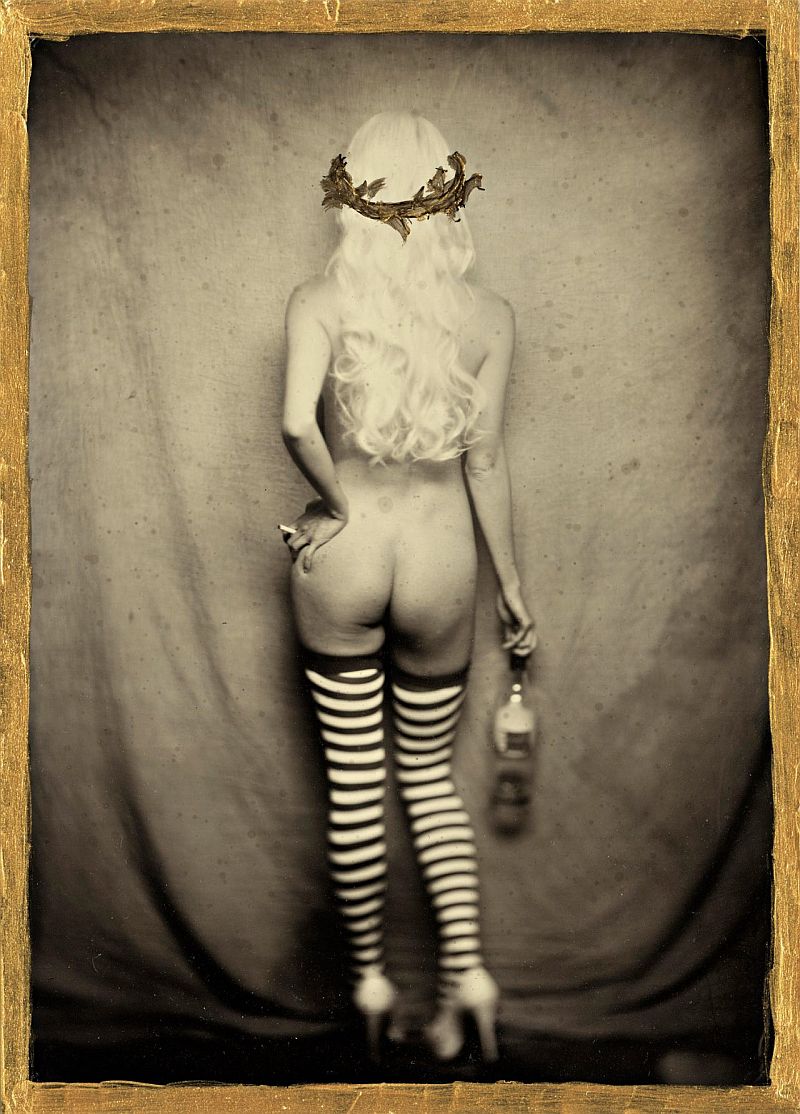

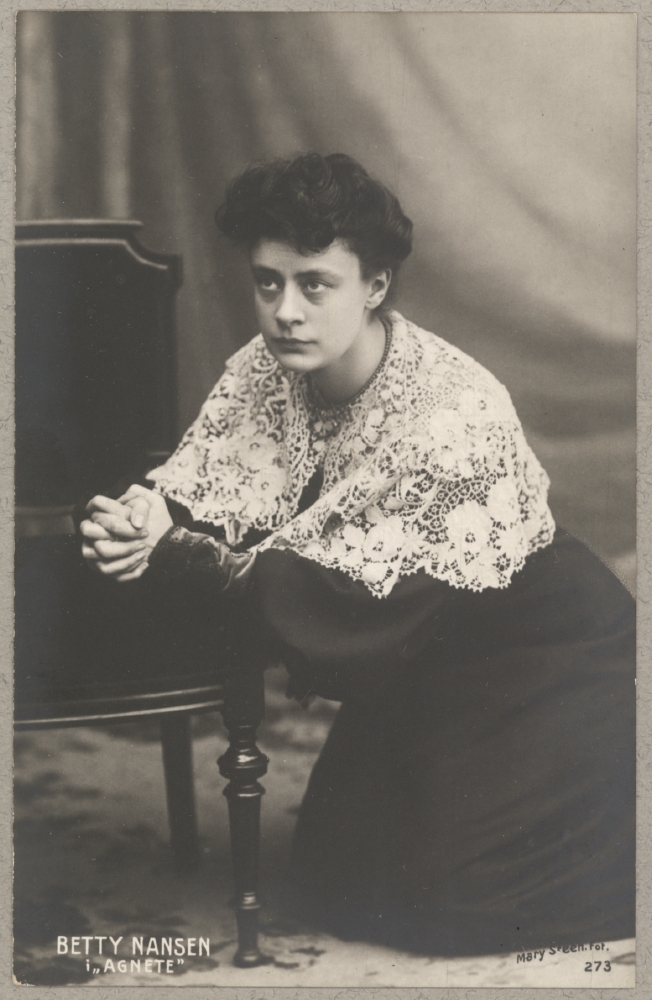




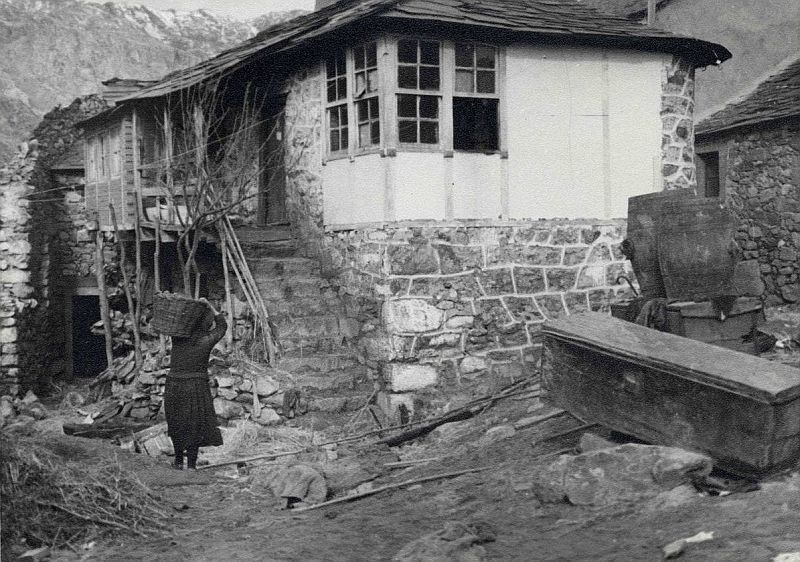




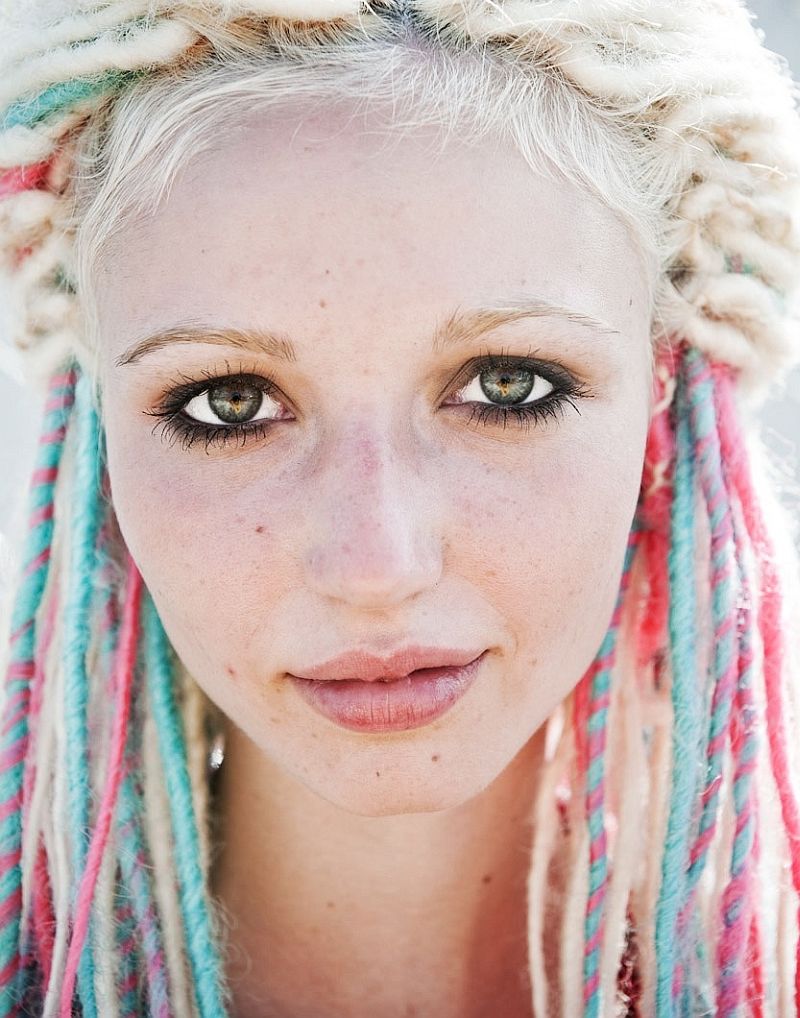




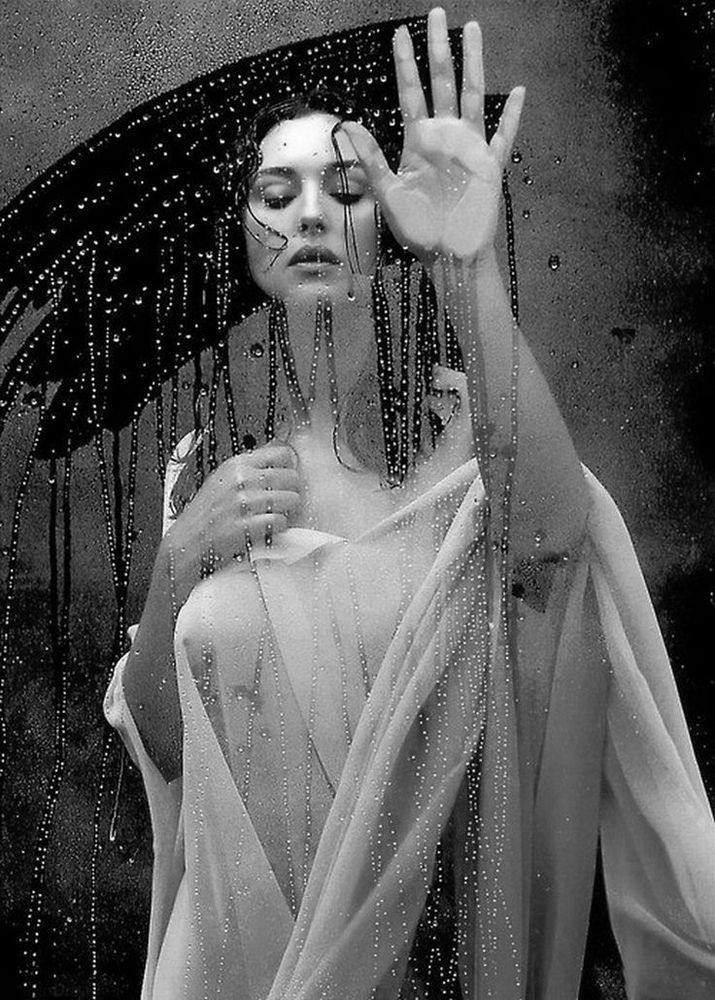
No hay comentarios:
Publicar un comentario